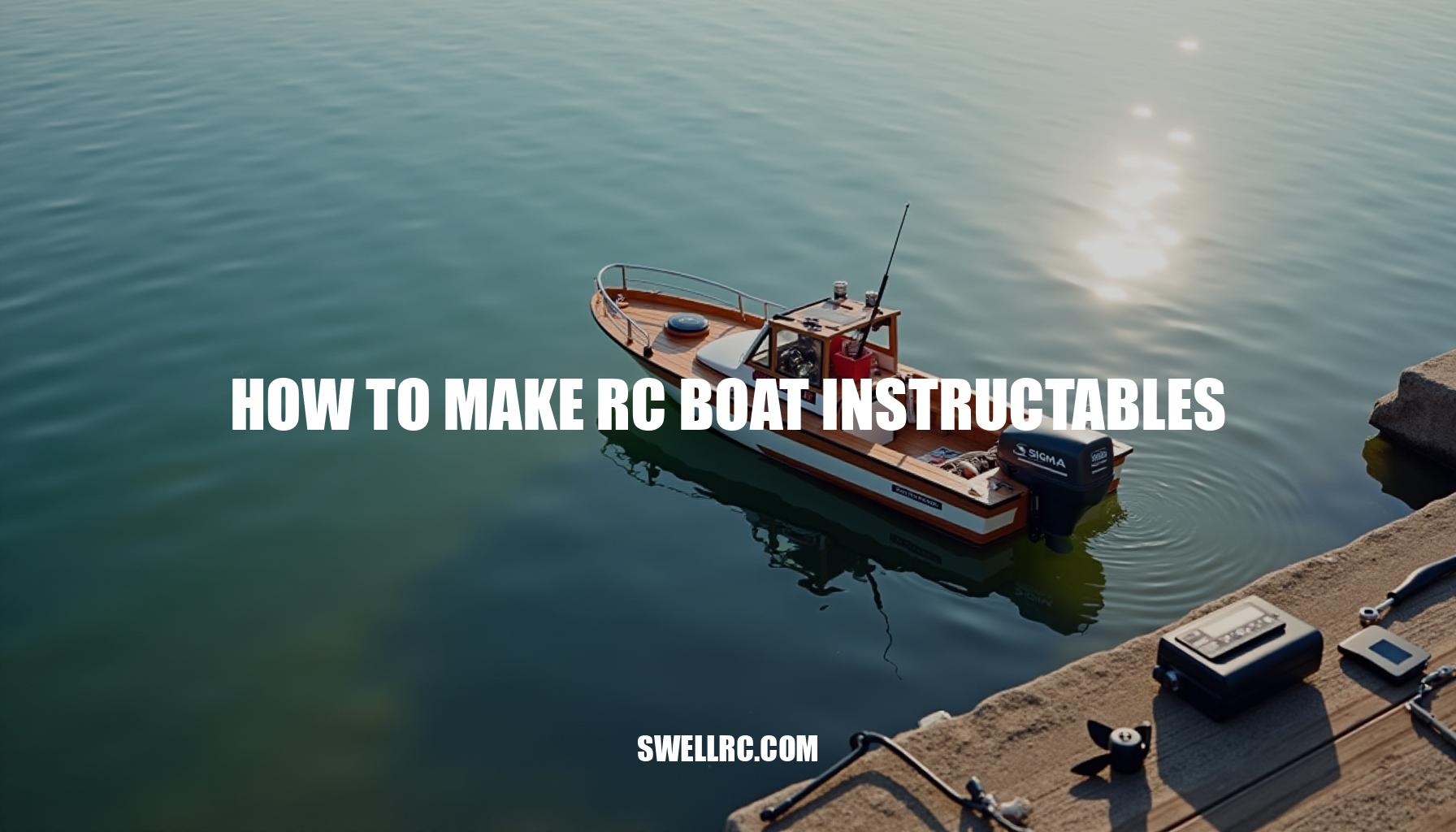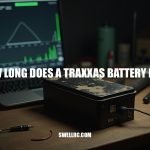How to Make RC Boat Instructables: A Step-by-Step Guide
The first time I hot-glued a balsa mockup and watched it scoot across a bathtub, I realized why building your own RC boat feels so addictive. It’s where creativity meets engineering, turning simple cardboard templates into sturdy fiberglass hulls and transforming scribbled wiring sketches into smooth throttle curves. This Instructables-style approach to DIY RC projects thrives on tinkering: try, test, tweak, repeat.
In this guide, I’ll walk you through the real garage-level steps that matter for your remote control models—planning your hull, picking the right motor and prop, mastering RC electronics wiring and waterproofing, and dialing in speed and stability. We’ll also explore off-the-wall ideas from kit bashes to weedeater-powered rockets and even LEGO builds. If you love learning by doing, you’re in the right place.
Along the way, I’ll point you toward proven resources I use myself, and for deeper dives, SwellRC is my go-to hub for RC experimenters looking to keep leveling up their step-by-step DIY RC boat build skills.
Planning and Designing the Perfect RC Boat
Great boats start on paper (or masking tape on the workbench). Hull choice sets your personality: deep-Vs slice through chop and track straight at speed; flat-bottom skiffs plane early and turn on a dime in calm water; outriggers ride on sponsons, minimizing drag for blistering speed. If you want a deep dive into shaping, laminating, and stiffening a hull, see this build-focused guide.
For materials, I’ve learned to pick based on abuse level and tools on hand—balsa for fast prototyping, plywood for budget-toughness, fiberglass for performance and durability, and plastics for easy waterproofing.
My make-or-break lesson emphasizes the critical importance of hull symmetry and waterline balance. A hull that’s even 2 mm off the centerline will cause your RC boat to porpoise or pull to one side, undermining performance. Take the time to square your transom, align the keel, and precisely mark the designed waterline before sealing your model.
| Material | Pros | Cons | Best Use |
|---|---|---|---|
| Balsa Wood | Lightweight, easy to shape, ideal for rapid prototyping | Low durability, prone to water damage without sealing | Quick builds and design testing |
| Plywood | Budget-friendly, stronger than balsa, affordable | Heavier, requires sealing to resist water | Durable beginner projects, budget RC builds |
| Fiberglass | High strength-to-weight ratio, excellent waterproofing, smooth finish | Requires skills and safety precautions, higher cost | Performance-oriented hulls demanding lightweight durability |
| Plastics | Easy waterproofing, flexible, resistant to impact | May be heavy, limited shaping options | Simple hulls requiring waterproof and rugged characteristics |
Choosing the right materials influences the overall RC boat hull design, ensuring a balance between lightweight durability and toughness tailored to your project needs. By prioritizing symmetry and waterline balance alongside material selection, you set a solid foundation for a successful build and optimized performance on the water.
Power Systems and Propulsion Methods
Power defines personality in the world of RC propulsion systems. Choosing the right motor greatly impacts your boat’s performance and character. For beginners or those seeking simplicity, brushed DC motors offer a reliable and inexpensive solution ideal for small, slow cruisers.
If you desire enhanced performance, electric RC motors like brushless variants deliver a superior power-to-weight ratio and higher efficiency, making them the best motor for RC boat projects that lean toward sport and racing builds.
Beyond electric options, gas or nitro engines introduce realistic sound and extended stamina but at the cost of added vibration and mechanical complexity. For the adventurous builder, a small two-stroke trimmer engine can fuel a wild experimental RC vessel; start your journey here: Weedeater motor RC boat build. Alternatively, impeller-driven designs provide excellent shallow-water capabilities and rock avoidance; explore the jet propulsion approach here: RC jet boat guide.
Effective energy management is crucial to maximize performance and longevity.
Here’s how to optimize your power setup:
- Battery types: LiPo packs are preferred for their high discharge rates and light weight.
- ESC selection: Choose an ESC rated above the expected current draw and compatible with your motor to ensure reliable control.
- Wiring: Keep wire runs short to minimize voltage drop, improving efficiency.
- Battery placement: Position batteries near the boat’s center of gravity to maintain neutral trim as they discharge.
- Testing: Always measure amperage with a wattmeter before selecting your propeller to avoid overloading your system.
By carefully matching your battery chemistry and ESC to your motor, and managing your RC boat’s energy flow, you’ll craft a vessel that’s not just powerful but also reliable and fun to pilot.
Wiring, Controls, and Waterproofing
Clean wiring equals reliability when working with RC electronics, so starting with a simple RC wiring diagram sketch is essential before you build on the bench. If you want a detailed step-by-step guide complete with photos and best practices, this walkthrough is clutch. My baseline process for an efficient setup includes:
- Mounting the motor and ESC.
- Connecting the ESC to the receiver’s throttle channel.
- Plugging servos into steering and throttle channels.
- Confirming the Battery Eliminator Circuit (BEC) voltage matches your receiver setup.
Waterproofing is often where beginners get bitten, so I treat it as a separate build phase with a benchtop leak test before the maiden run.
A proper waterproof servo setup ensures longevity and prevents failures — I once skipped sealing a servo grommet and popped an ESC, a mistake you only make once.
After completing all static tests, the next step is a tethered basin test to check both signal integrity and cooling flow before buttoning up the deck. Following this methodical approach to ESC wiring and overall wiring neatness will ensure your RC boat performs reliably every time.
Speed, Stability, and Performance Tuning
Speed is a system when it comes to optimizing your RC boat performance. Key factors such as prop pitch and diameter set load, while strut height and angle affect lift and drag. Additionally, battery placement controls center of gravity, with a forward-of-midships position offering better high-speed stability—a crucial element in stability tuning.
Small adjustments can lead to significant performance changes.
Start your RC boat speed upgrade guide journey with conservative props to monitor motor temperatures and current draw (amps). Incrementally stepping up helps avoid damaging components. Below is a handy table summarizing how each modification influences key performance aspects:
| Modification | Effect | Notes |
|---|---|---|
| Propeller Pitch & Diameter | Sets load; affects top speed and acceleration | Test incrementally; monitor temps and amps |
| Strut Height & Angle | Alters lift and drag on hull | Critical for hull modifications to optimize water flow |
| Battery Placement | Shifts center of gravity | Helps with weight distribution and high-speed stability tuning |
| Hull Modifications | Improves hydrodynamics and reduces drag | Requires testing; combines with strut adjustments |
For a targeted, step-by-step approach to squeeze out more top-end speed without risking your equipment, this resource is invaluable. It’s like having a detailed RC boat speed upgrade guide at your fingertips.
Like a professional pit crew, I maintain thorough logs covering lake conditions, prop specs, ignition timing, ESC temperature, and GPS-recorded speed. This data-driven approach helps distinguish real performance gains from placebo effects.
Safety becomes paramount as power increases. Always use thread locker on all hardware, conduct fail-safe tests before runs, and keep spectators at a safe distance. Remember, high RPM props are powerful and no joke—respect their potential, and your boat will reward you with impressive speed boosts.
Creative Builds and Advanced Inspirations
Some of my favorite projects start with RC boat kits and quickly evolve into unique, creative RC builds. Kits provide an excellent foundation for first-time builders or those eager to experiment with a new hull style. You can browse a wide range of options here to get started.
If you’re looking to prototype ideas rapidly, Lego RC boats are surprisingly versatile for concept testing. Discover some clever examples and techniques at this link.
For enthusiasts drawn to scale speed and commanding open-water presence, the RC offshore powerboat category offers inspiring designs that combine power and style. Explore these inspirations here.
If you want a model that can laugh at weeds and shallow water, consider RC airboats. These unique crafts skip props below the hull and glide effortlessly across challenging surfaces. Find starter ideas and kits at this page.
For lovers of raw velocity and sleek performance, RC outrigger boats are drag-minimizing missiles capable of incredible speeds and stability. Get inspired with various designs and kits here.
One of my most enjoyable experiments combined a 3D-printed jet unit with a fiberglass mini hull. It wasn’t perfect on the first try—cavitation taught me valuable lessons about inlet shaping—but iterative tweaks transformed it into a rocket. This hands-on approach embodies the spirit of DIY RC boating: build, test, learn, repeat.
Conclusion — The Reward of Craft and Curiosity
There’s nothing quite like the thrill when your remote control models perform just as you envisioned—smoothly carving turns and responding flawlessly. Building an RC boat embodies a cycle of hands-on learning and craftsmanship; each trial teaches you valuable lessons that fuel continuous improvement. Embrace the process of experimenting with different hull designs, propellers, and wiring layouts.
Keep a detailed log of your findings, and take time to celebrate every small breakthrough.
For those passionate about DIY RC projects, the journey is as rewarding as the destination. When you want to expand your skills further, the resources mentioned earlier along with the extensive knowledge base at SwellRC provide invaluable support, ensuring your learning curve remains steep and enjoyable.
So, gear up, head to the pond, and get ready to launch with your radio in hand, knees bent, and a grin that reminds you it’s launch day all over again.
Frequently Asked Questions
- What materials do I need to make an RC boat from scratch?
Typical materials include hull material (balsa, plywood, fiberglass, or plastic), epoxy or CA glue, fiberglass cloth (if laminating), motor (brushed or brushless), ESC, rudder and servo, propeller and shaft with coupler and stuffing tube, receiver and transmitter, battery (often LiPo), wiring and connectors, heat-shrink, waterproof sealant, and a balance charger. Handy tools: hobby knife, small saw, sanding blocks, drill/Dremel, soldering iron, and a wattmeter. - How do I make my RC boat faster?
Reduce drag and manage load. Start with correct center of gravity, then optimize prop (increase pitch or diameter gradually while watching temps and amps). Trim strut and rudder alignment, add or tune strakes/trim tabs, smooth the hull, and lighten the boat. Consider a higher kV motor or higher cell count within ESC/motor limits. Always verify current draw with a wattmeter before committing to high-load props. - Can I use a weedeater motor for an RC boat?
Yes, but it’s an advanced project. You’ll need a reinforced hull, robust mounts with vibration isolation, a fuel system, throttle linkage, cooling strategy, and larger control surfaces. Expect more noise and weight than electric. It can be thrilling and durable for long runs, but plan carefully and prioritize safety. - How do I ensure my RC boat is waterproof?
Seal hull seams and deck joints with epoxy or marine sealant, use dielectric grease on connectors, and house the receiver in a waterproof box or balloon. Choose servos with gaskets or add sealant around grommets, apply corrosion inhibitor on metal parts, and consider water-cooling for ESCs and motors. Test in a shallow basin for leaks and signal issues before full-speed runs. - What’s the easiest RC boat build for beginners?
A simple flat-bottom or modest deep-V electric kit is most forgiving. Choose a brushless motor with a matched ESC, a 2S LiPo, a direct-drive prop shaft, and a single steering servo. Kits with pre-cut parts or molded hulls reduce complexity so you can focus on clean assembly, alignment, and basic wiring. - How do I wire the motor and remote control components properly?
Plan the layout, then connect battery to ESC, ESC to motor (swap two leads to reverse brushless rotation if needed), and ESC’s BEC to the receiver’s throttle channel. Plug steering servo into the receiver’s steering channel. Use proper polarity, solid solder joints, and heat-shrink. Add an inline fuse for safety and verify operation and current draw with a bench test before sealing the hull. - Are there RC boat kits for custom builds?
Absolutely. Many kits provide a solid hull and hardware while leaving electronics, powertrain, and detailing up to you. They’re ideal for learning fundamentals and then iterating—swap props, motors, and ESCs as your goals evolve. Look for kits with clear instructions, robust hardware, and room to access internals. - How do Lego Technic RC boats compare to traditional kits?
LEGO Technic builds are fantastic for fast prototyping and teaching mechanisms. They’re modular and easy to modify, but they’re heavier and less hydrodynamic and waterproof than dedicated hull kits. Traditional kits deliver better speed, handling, and durability on the water. Use LEGO to test concepts; switch to a purpose-built hull for performance.



